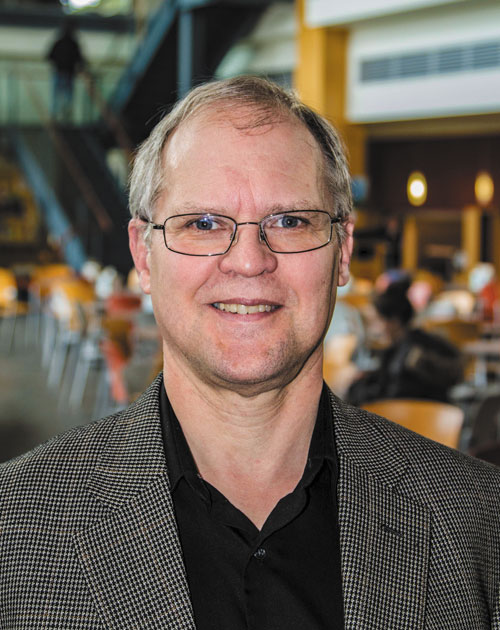D.C. museums seek professor’s expertise

After teaching as a professor of the history of science for 36 years, Ted Davis is finding himself quite busy in his retirement. Recently, he served as a member of the advisory groups for two exhibits in Washington, D.C.: “Discovery and Revelation” at the Smithsonian National Museum of American History and “Scripture and Science” at the Museum of the Bible.
“I don’t do science, I study the history of it. It’s the difference between an art historian and an artist,” explained Davis of his role with the two exhibits.
Smithsonian National Museum of American History
The “Discovery and Revelation” exhibit in which Davis had a smaller role because of COVID restrictions, highlighted the complex relationship between science and religion, which has been the subject of philosophical debate for centuries. He notes the progress of such a well-known, secular museum hosting a faith-based exhibit.
“Religion is a big part of American life, and the fact that the National Museum hadn’t previously devoted much attention to religion is a big change,” said Davis.
Museum of the Bible
Students from Messiah’s Honors Program traveled to D.C. Jan. 21 to see the “Scripture and Science” exhibit, where several of Davis’ personal artifacts are on display. The exhibit explores the Bible’s role as it relates historically to science and religion. The museum describes the exhibit as busting the myth “that science and biblical faith have been ... opposed to each other” and invites attendees to discover the Bible’s impact on science.
“It takes remarkable acts of faith to make scientific assertions about the way the universe works,” said Elise Kersten ’25, an engineering major, after seeing the exhibit. “We need to accept the fact that we know next to nothing. And that’s when we start to begin understanding things. I think approaching God is similar. The more we try to understand Him, the smaller we realize we are, but that ultimately increases our understanding as we become more fully aware of how big and beautiful He is.”
Artifacts included Nicholas Copernicus’ “On the Revolutions of the Heavenly Species” from 1543.
The students were free to explore the entire museum, not just the exhibit, and found many treasures throughout.
There were several other artifacts like this that show kings boasting about their conquests. Omri is not a person one typically thinks of when studying the Bible, but he is mentioned in Kings and Chronicles. Seeing these artifacts helped me realize that the Bible is living and historically accurate since even the more minor characters of the Bible were very real to other kings in their day,” said Elizabeth Hargrove ’24, an electrical engineering major.
In addition to the educational benefit, the trip also proved to be a time for fun.
“Going to the Museum of the Bible with the Honors Program will probably be the highlight of this semester. I really enjoyed the Christian fellowship, fun and a capella from the car rides to the museum and back. Besides this, the museum was exciting and huge! I loved the exhibit where you get to walk through first-century Nazareth,” said Hanalee Nichols ’23, who is majoring in mathematics with a secondary teaching certificate.
Although the Smithsonian exhibit closed in March, the Museum of the Bible’s exhibit will remain open through January of 2024.
— Anna Seip